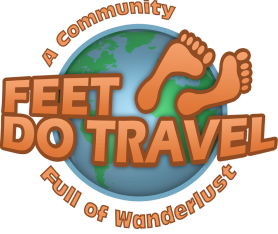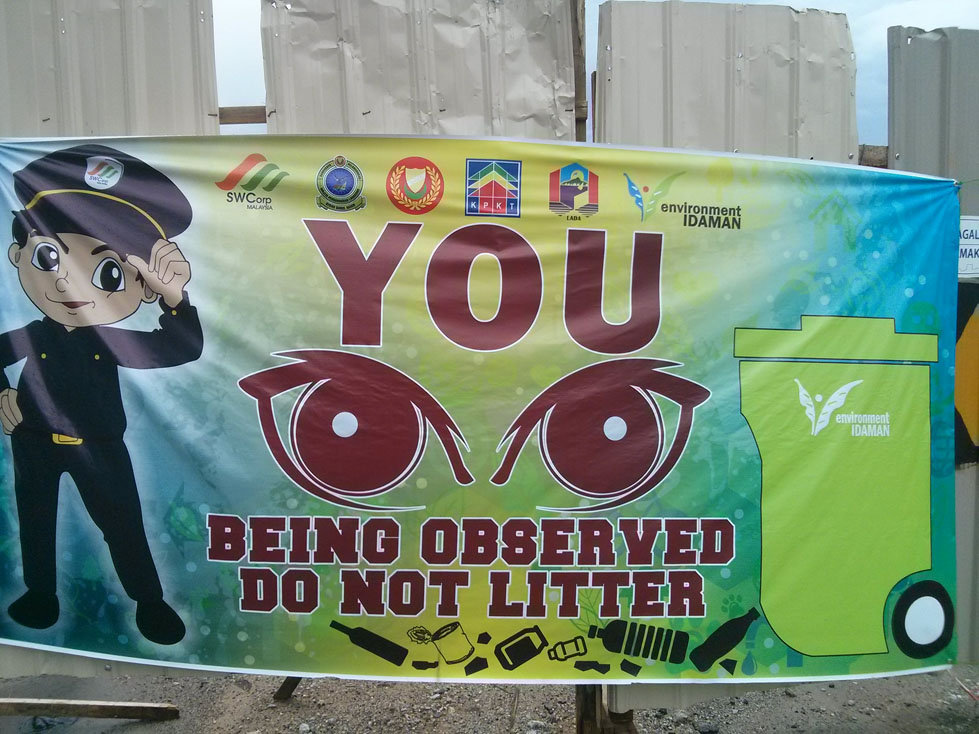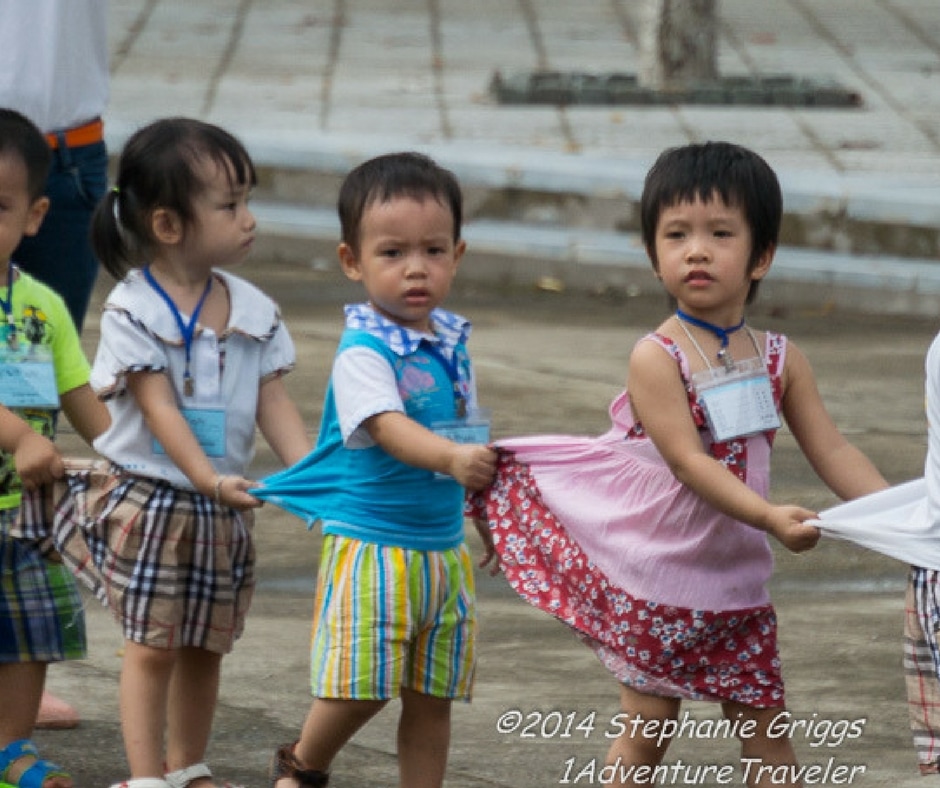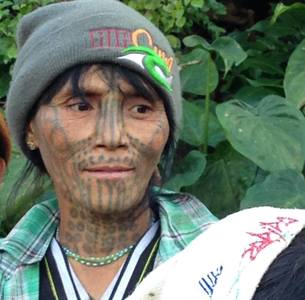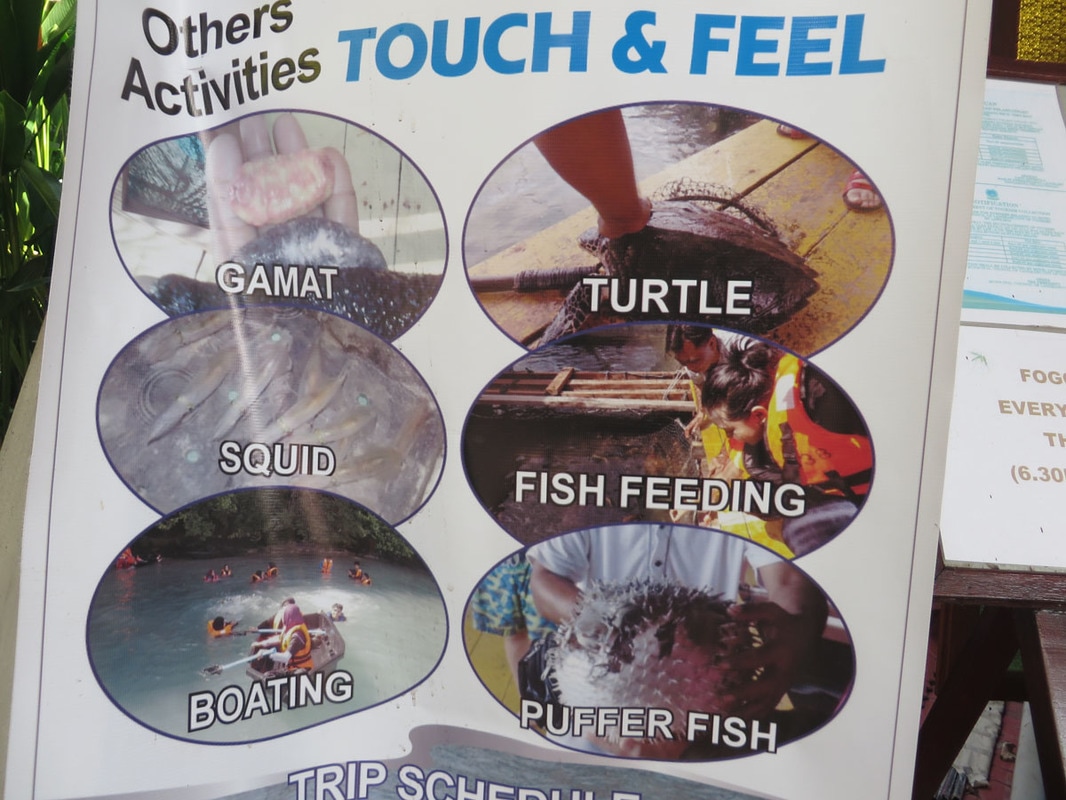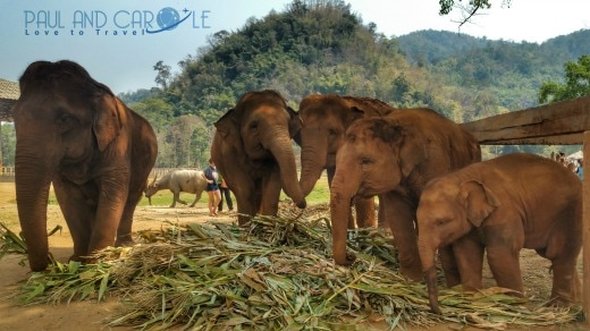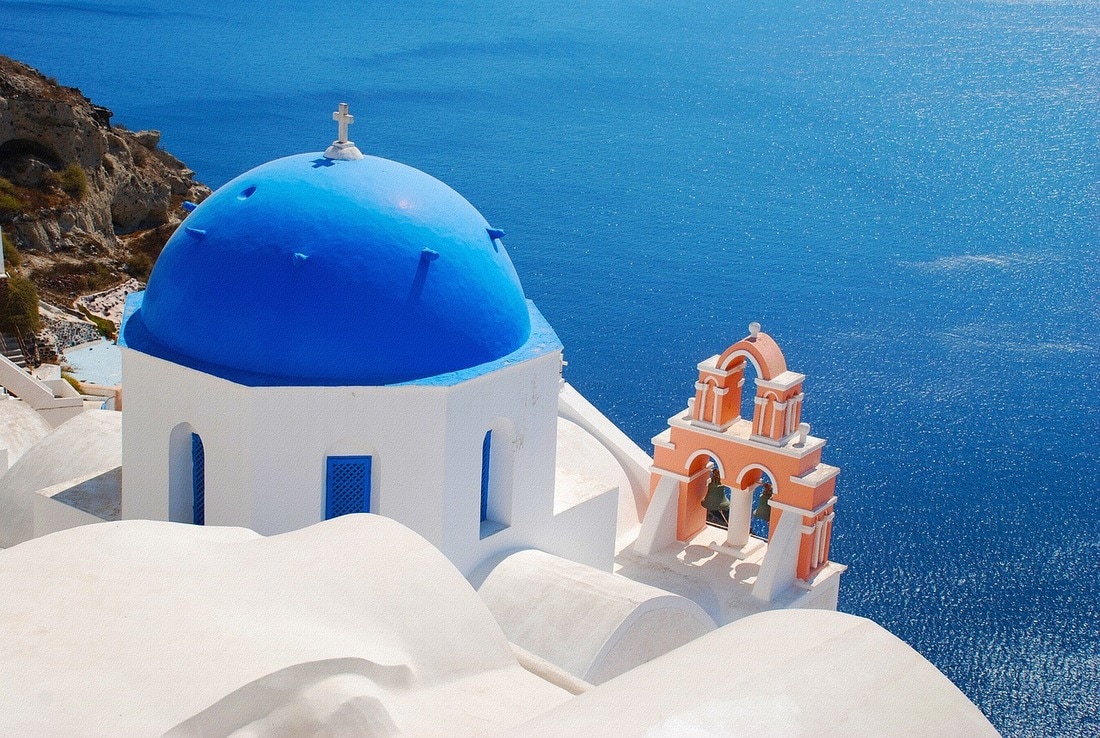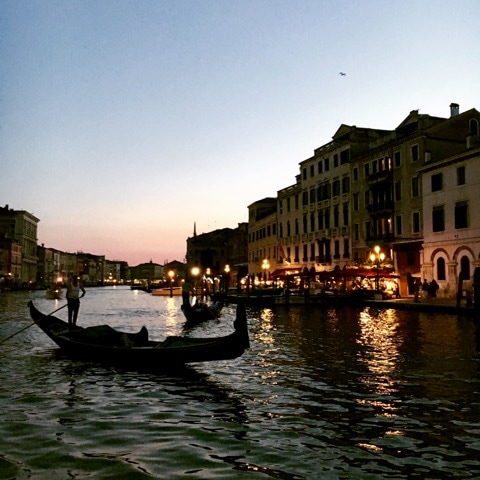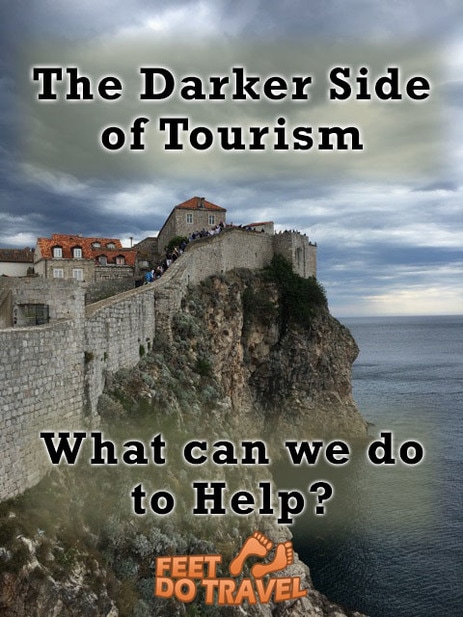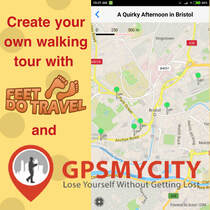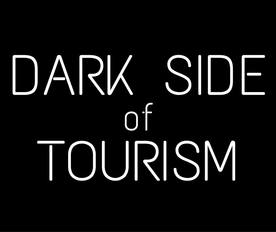
However, over the years, tourism has taken its toll and often changed the way locals think and act towards foreigners, not always for the better.
I asked some travelling friends if they would like to help highlight some of the issues and how we can all do our part when we are visiting a new country. The topics are varied, the end result is the same … read, learn, then make a difference!
By Charlie & Kristina of Map Trotting
Thinking about this subject brings back the memory of a visit we made to a tiny tribal village on the banks of the Mekong River in Laos. We were on a two day slow boat tour and the guide had instructed us to buy some gifts for the children of the village the previous evening. Not wanting to give sweets to kids in a place with very limited access to a dentist, so we opted instead for some potato snacks to hand out.
We didn’t realise that they were all individually wrapped until we gave them out and the children started to chuck the wrappers on the ground. Trying our best to pick up any stray wrappers, we both felt very guilty for causing extra litter in this tranquil spot.
Travelling has made us realise just how badly everyday waste is dealt with around the world. It really brings home the problem our planet is facing from items that won’t degrade for thousands of years if at all! Always take your rubbish with you, no exceptions!
There is an alternative to encourage the children to go to school. On one of my Viking River Cruises, I was educated and taken to a school in a poor country. This school taught the children English, Math, Science, plus a Trade. The children learned to paint, draw, sew, cross stitch, make bracelets and more. The children proudly displayed their work for purchase. I was happy to purchase something from all the children. Now when traveling I do not to give the children who beg money. Buy items from the children instead, which gives them respect and a sense of worth. This way, more children will go to school, learn, have a better life and not be caught in the cycle of not going to school.
Human exploitation
Contribution by Marian Watson
This is actually a public confession because I am totally guilty of what I am about to condemn. Together with many others in this world, I love taking photos of people. The more exotic and interesting they are, the better it is. But I realise it’s a gross invasion of privacy and modesty and I probably need to stop it.
Ethnic minorities have always fascinated me, so travelling to far flung places to get that unique shot of a unique face is the highlight of every trip. But I am, of course, unintentionally encouraging exploitation. Already in some parts of the world there are minority tribes who demand payment for any photos taken of them dressed in national costume. The lip-plate ladies of the Mursi and Suri tribes in Ethiopia along the Omo river have been charging tourists for quite a few years now. The long-neck ladies of the Paduang (Karen tribe) of Myanmar and Thailand sit around popular tourist areas requesting payment. I recently visited a Hmong village in Laos which had been set up purposely with village children dressed in costume displaying their local handicrafts. They were not directly asking for money for their photos but obviously we felt we had to buy their wares. In Cambodia I was harassed by a mother selling tarantulas in the market. She insisted I take a photo of her child with a live tarantula crawling up his chest which would have cost me 1 dollar. I desisted.
Included are photos of the tattooed face Chin Hill ladies from Myanmar and Akha tribe ladies from Laos. As yet both untouched by photography tourism.
I am not quite sure when I will be able to curb this habit but I am seriously working on it!
By Angie & Simon of Feet Do Travel
What you can do to help: Make sure you do your research carefully, don’t just take someone’s word for it. Use sites such as Trip Advisor and read more than just a couple of reviews and also travel blogger posts. Remember the key thing; these animals are meant to be treated like wild animals; if you are doing something which changes their natural behaviour, then you are interfering with something you should not be eg: holding a starfish either in or out of water, feeding eagles in Langkawi or whale sharks in Cebu or sitting next to a chained up tiger.
However there is some hope. The numbers are small, but there are some responsible sanctuary’s in Thailand where they take the abused elephants and care for them, and one such sanctuary is the Elephant Nature Park near Chiang Mai. Some elephant camps call themselves sanctuary’s but don’t be fooled by this word, if they are riding elephants it is not, make sure you do your research.
So before you ride an elephant, watch it paint or go to the circus please think again, tourists need to be educated so that they can chose to spend time with these magnificent creatures in environments where they are cared for and not abused, such as the Elephant Nature Park.
We spent the most wonderful day here, being educated about the dark side of elephant tourism. If you would like more information, do read the full post here.
Behaviour of tourists at sacred buildings
Contribution by Julie German
Visiting under-developed countries
Contribution by Philip Moren
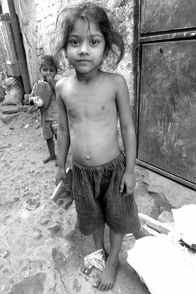
Much has been written about ‘poverty tourism’. Many argue that it is voyeuristic, patronising and demeaning. Poor communities are exploited for the sake of that ‘fantastic photo-opportunity’ and allow tourists to feel better about themselves. On the other hand, many tours are responsibly managed, educative and generate valuable income for local people.
So what should you do when visiting poorer countries? Having toured the shanty towns of Lima, the slums of Delhi and tribal villages in Africa and south-east Asia, here are my tips.
- If taking an organised tour, choose a company that invests in the local community.
- Dress appropriately – don’t wear anything that accentuates your relative wealth. Only take a small bag with you.
- Don’t take a big camera otherwise you are likely to give the wrong impression. Instead, take a good quality compact camera and ask permission before you take any photographs.
- “Spread the love”, as one tour guide called it. This means putting a little money into the local economy by buying souvenirs. Their quality doesn’t really matter - you are helping people to survive.
- Don’t buy from children, unless you know they are not skipping school. Indiscriminate buying from ‘cute’ kids can encourage their parents to keep them out of education.
- Don’t give to beggars except in special circumstances. To do so simply fosters a culture of laziness and dependency.
- Don’t give children sweets/candies. Poorer communities rarely have access to properdental care. Pens, pencils and exercise book are a better choice.
- Interact with the locals. They are not animals in a zoo. Accept their hospitality, if offered.
- Donate to local community projects if invited to do so.
- Consider a child/student sponsorship programme.
By Tracy from Tracy's Travels in Time
A good example to examine is Cinque Terre. In the last few years this set of five fishing villages on the Liguria coast in Italy has hit the spotlight – it seems to be the place everyone wants to visit in Italy – 2.5 million visitors seem to have agreed in 2015 alone! At the very least overcrowding must be an issue never mind the impact of all the transport needs of people getting to and from these small villages.
Last year we visited Dubrovnik – famed for its beautiful walls. We weren’t the only ones though – on any one day, 2 or 3 cruise ships moored in port and regurgitated up to 3000 tourists all eager to see this beautiful city. Now Dubrovnik old city has two SMALL entrances – the Pile Gate is where most people enter and exit. The result one day last summer? A near crush with thousands of people trying to get in and out through that little gate – it was one of the most terrifying things to observe.
What can we do as tourists to lessen the impact of our desire to visit these beautiful places? I have no answer to this but clearly something needs to be done. UNESCO itself have acknowledged the problem and their sustainable tourism programme aims to ensure a shared responsibility for conservation of sites and for sustainable development through tourism management.
Perhaps drastic measures are sometimes the only answer. Thailand recently closed access to a number of islands due to the shocking impact of tourism which was had brought the local environment to the brink of destruction.
If we want to ensure the survival of these beautiful places for future generations, the hard truth may be that restrictions or a total ban may be the only answer if more sustainable ways of managing tourist numbers cannot be introduced. What do you think?
Has this blog shown you a different way of thinking? Had you considered some of these subjects before now? Do you have any issues you have discovered which you wish to discuss? Please share in the comments below.
If you like this post, please Pin and share it!
We are proud to host the #FollowMeFriday blog Linkup. If you have a blog post you would like to share, feel free to click on the picture below which will take you through to our Facebook Community and drop your link there. The link-up is open NOW and will close 8pm UK time Sunday. We are a fun and loyal group who are more than happy to comment, share and reciprocate! Happy Travelling Feet Fans!
